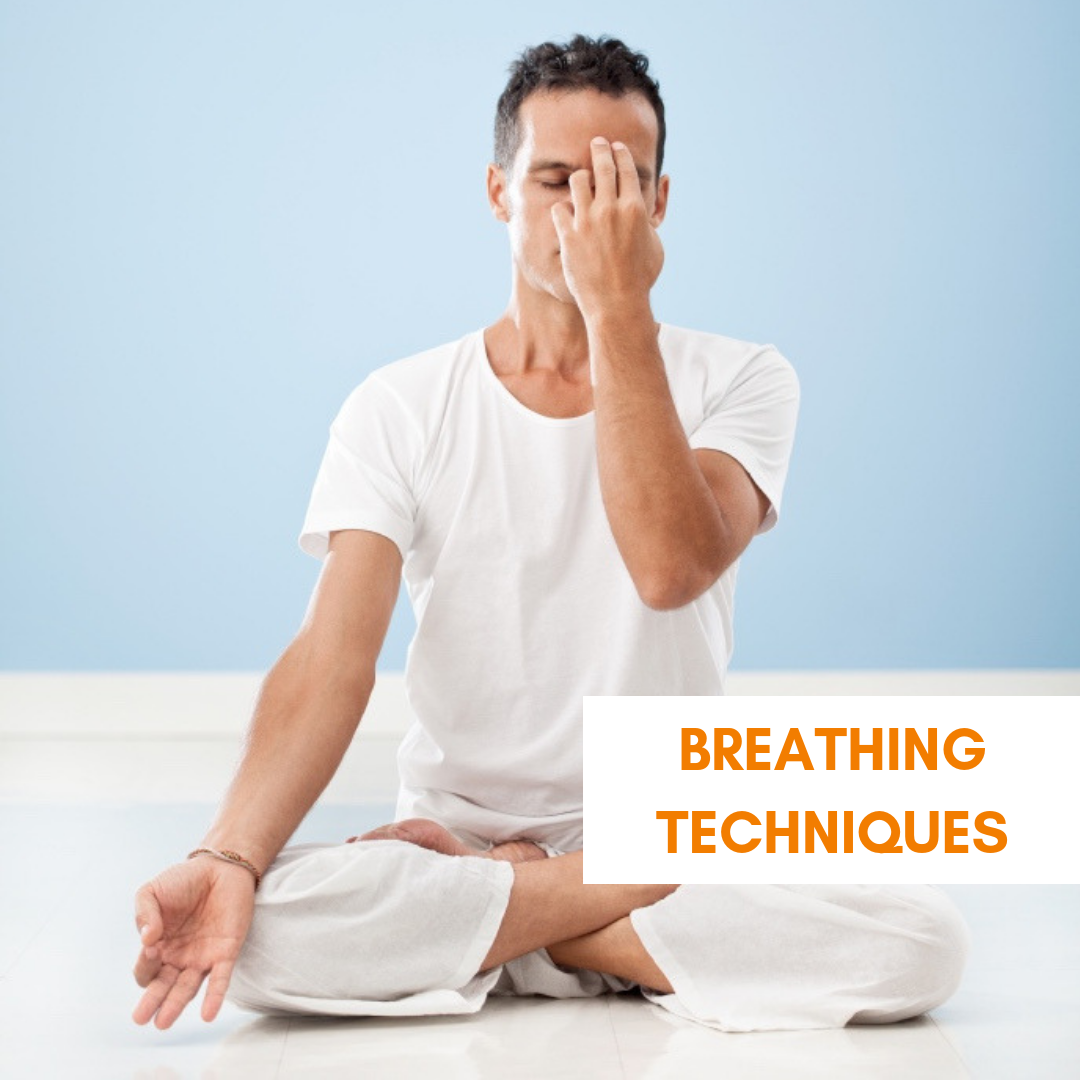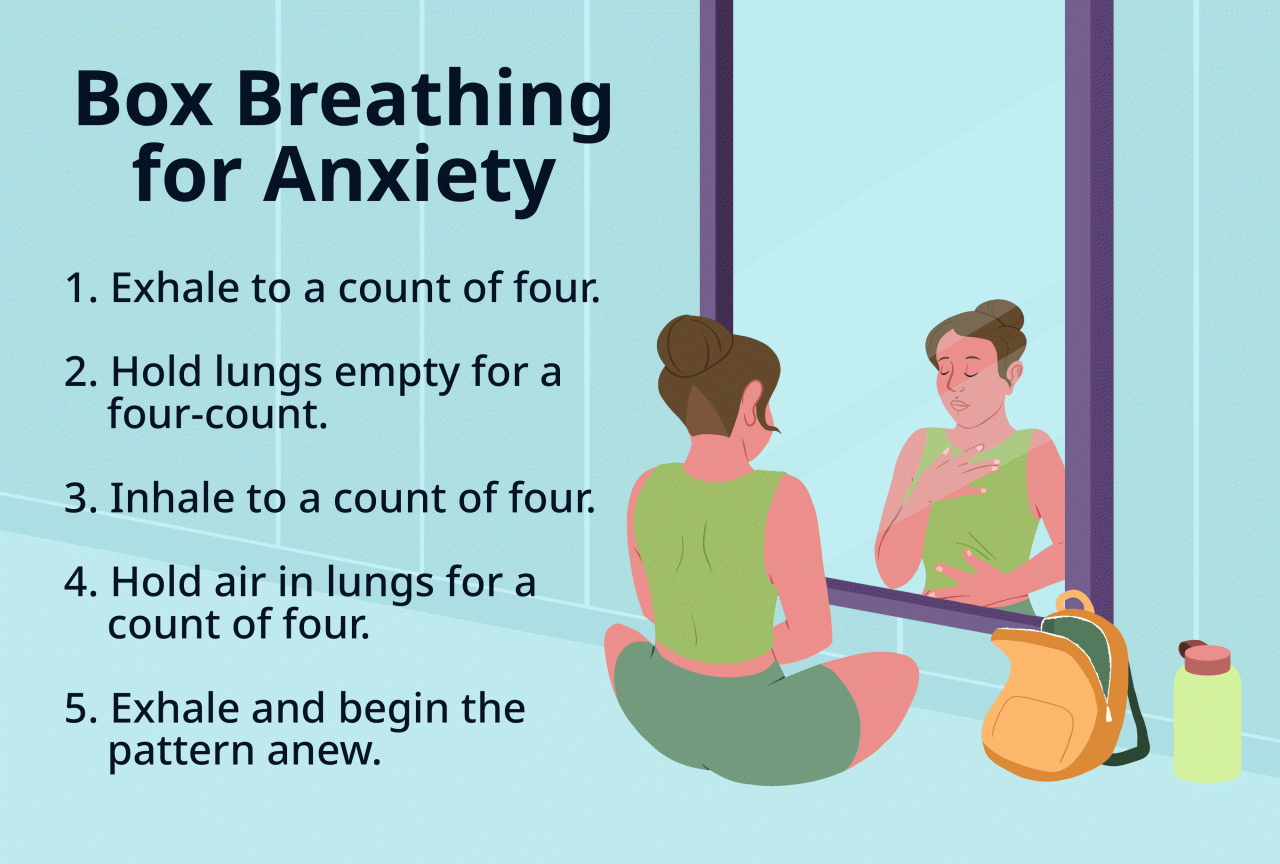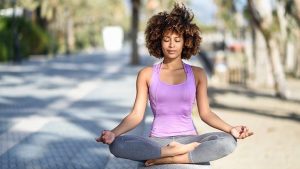
Types of Breathing Techniques

Breathing techniques, also known as pranayama in some traditions, offer a range of benefits for physical and mental well-being. Different techniques engage various parts of the respiratory system and nervous system, leading to distinct effects. Understanding these variations allows for personalized practice based on individual needs and goals.
Diaphragmatic Breathing
Diaphragmatic breathing, also called belly breathing or abdominal breathing, focuses on utilizing the diaphragm, the primary muscle responsible for breathing. This technique emphasizes deep, slow breaths that fully expand the abdomen. The benefits extend beyond simple oxygen intake; it promotes relaxation, reduces stress, and can even improve sleep quality.
Here are some examples of diaphragmatic breathing exercises:
- Basic Diaphragmatic Breath: Lie on your back with knees bent and feet flat on the floor. Place one hand on your chest and the other on your abdomen. Inhale slowly and deeply, feeling your abdomen rise while your chest remains relatively still. Exhale slowly, feeling your abdomen fall. Repeat for 5-10 minutes.
- Diaphragmatic Breath with Visualization: Combine the basic technique with a visualization exercise. Imagine your breath flowing down into your abdomen, filling it like a balloon. As you exhale, visualize the balloon slowly deflating. This adds a mental component to enhance relaxation.
Variations in diaphragmatic breathing can involve adjusting the breath duration (inhale/exhale ratio), incorporating specific counts, or combining it with other relaxation techniques like progressive muscle relaxation.
Pranayama
Pranayama encompasses a broad range of breathing techniques originating from yoga traditions. These techniques go beyond simple inhalation and exhalation, manipulating the breath to influence the flow of prana (vital energy) within the body. The benefits are wide-ranging, impacting energy levels, mental clarity, and emotional balance.
Examples of pranayama exercises include:
- Nadi Shodhana (Alternate Nostril Breathing): Sit comfortably with your spine straight. Use your right thumb to close your right nostril, inhaling through your left nostril. Close your left nostril with your right ring finger, exhale through your right nostril. Inhale through your right nostril, close your right nostril, and exhale through your left. Continue for 5-10 minutes.
This technique is believed to balance the energy channels in the body.
- Ujjayi Breath (Victorious Breath): Inhale and exhale slowly through your nose, constricting the back of your throat slightly to create a gentle, oceanic-like sound. This technique is often used in yoga practices to promote a sense of calm and focus.
Pranayama techniques can be modified by adjusting the breath ratios, breath holds (kumbhaka), and the pace of breathing. Beginners should start with shorter durations and gradually increase practice time.
Box Breathing
Box breathing, also known as square breathing, is a technique involving equal durations for inhalation, holding the breath, exhalation, and holding the breath again. This rhythmic breathing pattern is particularly effective for stress reduction and promoting a sense of calm. It’s often used in high-pressure situations to regain composure.
Here’s how to perform box breathing:
- Basic Box Breath: Inhale for a count of four, hold for a count of four, exhale for a count of four, and hold for a count of four. Repeat the cycle for several minutes. You can adjust the count (e.g., 5-5-5-5) to suit your comfort level.
Modifications to box breathing may involve altering the count durations or combining it with mindfulness practices to enhance its calming effects. For instance, you might focus on the sensations of your breath as you perform the exercise.
| Technique Name | Description | Benefits | Common Applications |
|---|---|---|---|
| Diaphragmatic Breathing | Focuses on deep abdominal breathing using the diaphragm. | Stress reduction, improved sleep, relaxation. | Stress management, anxiety relief, pre-sleep routine. |
| Pranayama | Various breathing techniques from yoga traditions, manipulating breath to influence prana. | Increased energy, mental clarity, emotional balance. | Yoga practice, meditation, stress management. |
| Box Breathing | Equal durations for inhalation, hold, exhalation, and hold. | Stress reduction, calm, focus. | High-pressure situations, meditation, calming before sleep. |
Breathing Techniques for Stress Reduction

Stress significantly impacts our well-being, often manifesting as anxiety, tension, and reduced cognitive function. Understanding the intricate connection between breathing and the autonomic nervous system is crucial for effectively managing these effects. By consciously regulating our breath, we can influence the body’s stress response, promoting relaxation and a sense of calm.The autonomic nervous system (ANS) governs involuntary bodily functions, including heart rate, digestion, and breathing.
It comprises two branches: the sympathetic nervous system (SNS), associated with the “fight-or-flight” response, and the parasympathetic nervous system (PNS), responsible for the “rest-and-digest” response. During stressful situations, the SNS is activated, leading to increased heart rate, shallow breathing, and muscle tension. Conversely, activating the PNS through controlled breathing techniques counteracts these effects, promoting relaxation and reducing stress.
Diaphragmatic Breathing for Stress Management
Diaphragmatic breathing, also known as belly breathing, is a foundational technique for stress reduction. It involves deep, slow breaths that fully utilize the diaphragm, the primary muscle responsible for breathing. This type of breathing activates the PNS, slowing the heart rate and reducing cortisol levels (the stress hormone).A step-by-step guide for practicing diaphragmatic breathing:
- Find a comfortable position, either sitting or lying down. Imagine a balloon resting on your abdomen.
- Place one hand on your chest and the other on your abdomen, just below your rib cage. Observe your chest and abdomen as you breathe naturally.
- Inhale slowly and deeply through your nose, focusing on expanding your abdomen. Your hand on your abdomen should rise noticeably, while the hand on your chest should remain relatively still. Visualize your breath filling your lungs from the bottom up, like filling a glass with water.
- Hold your breath for a brief moment (1-2 seconds), then exhale slowly and completely through your mouth, allowing your abdomen to gently deflate. Imagine the air slowly leaving your lungs, like releasing air from a balloon.
- Repeat this process for 5-10 minutes, focusing on the rhythm of your breath and the sensation of your abdomen rising and falling. Visualize a calming image or scene, such as a peaceful beach or a lush forest.
Comparison of Breathing Techniques for Stress Relief
Several breathing techniques offer stress relief, each with unique characteristics and effectiveness. Diaphragmatic breathing, as discussed above, is a highly accessible and effective method. Other techniques include:
| Technique | Description | Effectiveness for Stress |
|---|---|---|
| Box Breathing | Inhale for 4 counts, hold for 4 counts, exhale for 4 counts, hold for 4 counts. | Highly effective for immediate stress reduction, particularly useful in high-pressure situations. It creates a sense of calm and control. |
| Alternate Nostril Breathing (Nadi Shodhana) | Inhale through one nostril, exhale through the other, alternating nostrils with each breath. | Effective for balancing energy and reducing anxiety. It requires some practice to master but offers a deeper level of relaxation. |
| Progressive Muscle Relaxation with Breathing | Combine tensing and relaxing specific muscle groups with deep, controlled breaths. | Excellent for releasing physical tension associated with stress. The combination of physical and mental relaxation is highly effective. |

